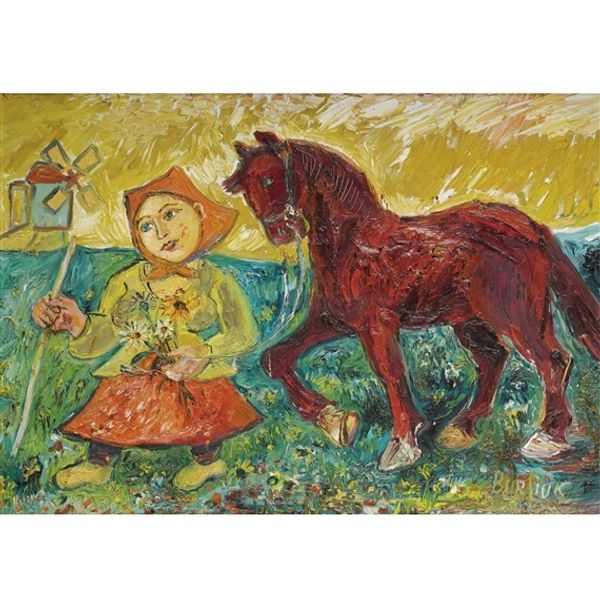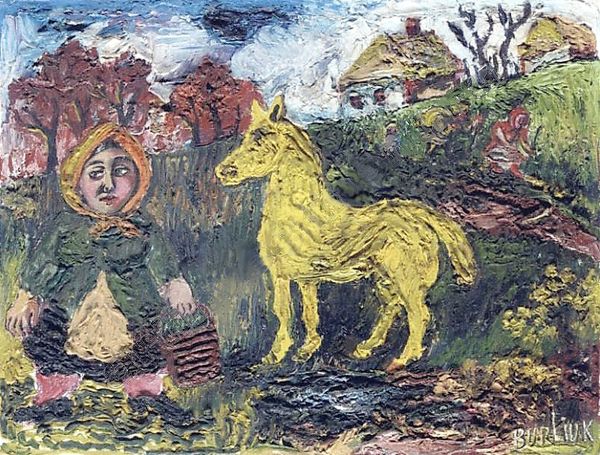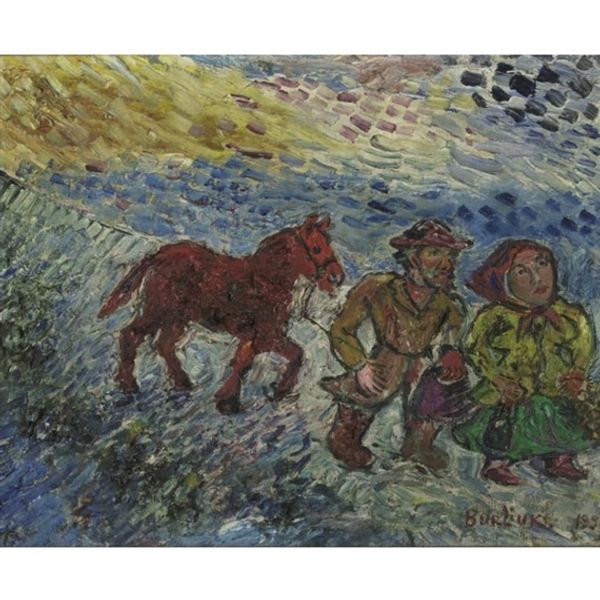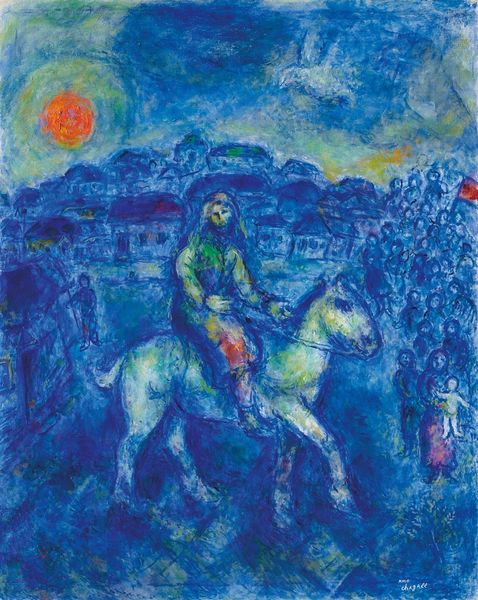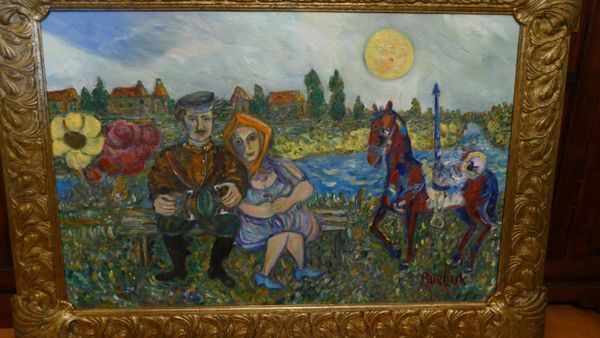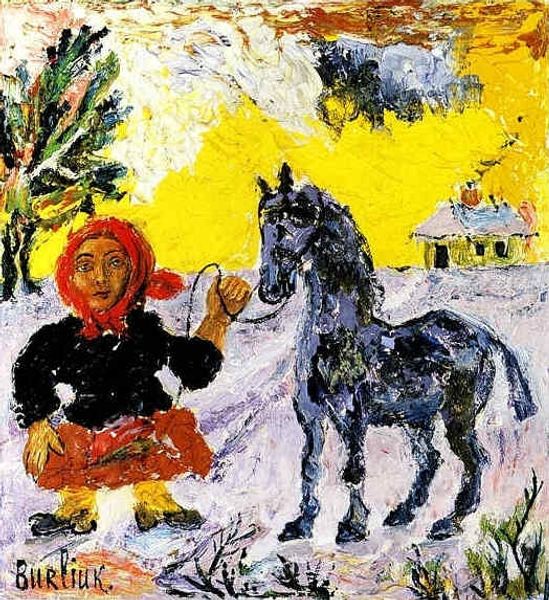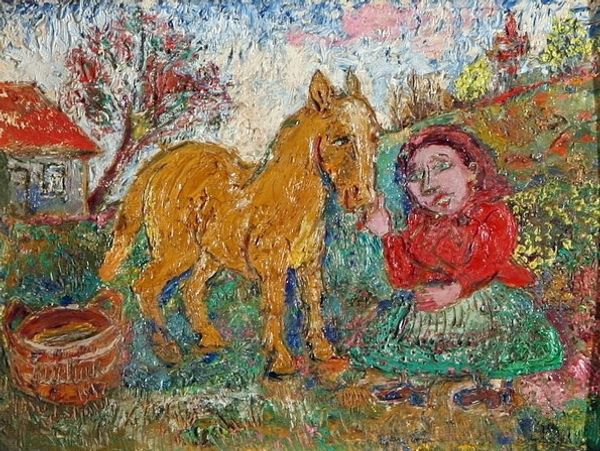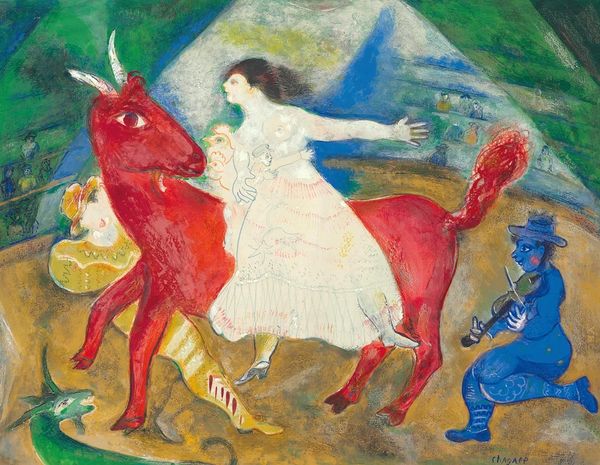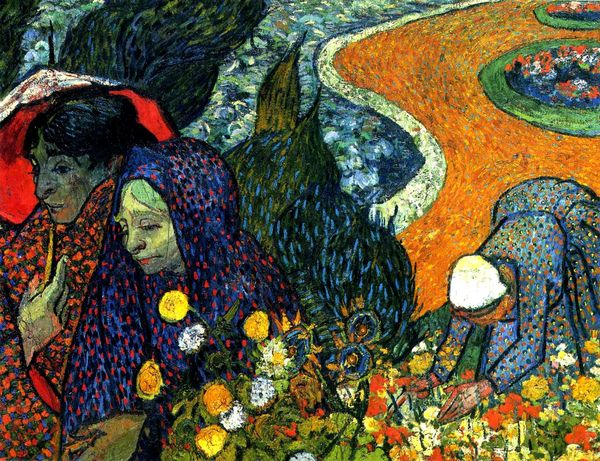
Dimensions: 20.3 x 25.4 cm
Copyright: David Burliuk,Fair Use
Editor: This is "Woman in Yellow Dress with Black Horse" by David Burliuk, painted in 1951, using oil on canvas. I’m struck by the thick application of paint; it almost feels sculptural. The composition is so interesting and naive at the same time! What do you see in this piece from your perspective? Curator: For me, the painting speaks volumes about labor and the everyday lives of rural people. Look closely at how Burliuk uses impasto—the thick layers of paint. This isn't just about aesthetics; it’s about the physical act of making, mimicking the physical exertion of agricultural work. What does that texture evoke for you? Editor: It does add to that rustic, almost unrefined, feel. The naivety feels honest in that way. How might his choice of materials have impacted the artwork’s reception at the time? Curator: Oil paint, readily available and relatively affordable, allowed Burliuk to directly engage with the materiality of his subjects—the soil, the horse's coat, the woman's simple dress. By not attempting to disguise the materials, but celebrating them, he challenged the elitism of the art world. Also, note the bright colours, hinting at the Expressionist movement, which also celebrated bold direct applications and questioned the establishment! Editor: So, the painting becomes almost a document of its own making, highlighting both the subject's labor and the artist's! That's fascinating. Curator: Exactly. And consider the horse – a symbol of agricultural power, now potentially being replaced by machinery. Burliuk captures a fleeting moment of transition and highlights the physical presence of labor before mechanization fully took over. Editor: I hadn’t considered the horse that way! It’s like a memorial to a changing landscape, built out of paint itself. Thanks so much! Curator: My pleasure. Seeing art through the lens of material and production can really enrich our understanding.
Comments
No comments
Be the first to comment and join the conversation on the ultimate creative platform.
